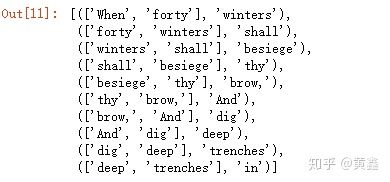Pytorch基礎
2020-08-12 14:20:38
一、Pytorch基礎
首先,第一步是匯入pytorch的一系列包
import torch
import torch.autograd as autograd #Autograd爲Tensor所有操作提供自動求導方法
import torch.nn as nn
import torch.nn.functional as F
import torch.optim as optim
1)Tensor張量
a) 建立Tensors
#tensor
x = torch.Tensor([[1,2,3],[4,5,6]])
#size爲2x3x4的亂數亂數
x = torch.randn((2,3,4))
b) Tensors計算
x = torch.Tensor([[1,2],[3,4]])
y = torch.Tensor([[5,6],[7,8]])
z = x+y
c) Reshape Tensors
x = torch.randn(2,3,4)
#拉直
x = x.view(-1)
#4*6維度
x = x.view(4,6)
2)計算圖和自動微分
a) Variable變數
#將Tensor變爲Variable
x = autograd.Variable(torch.Tensor([1,2,3]),requires_grad = True)
#將Variable變爲Tensor
y = x.data
b) 反向梯度演算法
x = autograd.Variable(torch.Tensor([1,2]),requires_grad=True)
y = autograd.Variable(torch.Tensor([3,4]),requires_grad=True)
z = x+y
#求和
s = z.sum()
#反向梯度傳播
s.backward()
print(x.grad)
c) 線性對映
linear = nn.Linear(3,5) #三維線性對映到五維
x = autograd.Variable(torch.randn(4,3))
#輸出爲(4,5)維
y = linear(x)
d) 非線性對映(啓用函數的使用)
x = autograd.Variable(torch.randn(5))
#relu啓用函數
x_relu = F.relu(x)
print(x_relu)
x_soft = F.softmax(x)
#softmax啓用函數
print(x_soft)
print(x_soft.sum())
output:
Variable containing:
-0.9347
-0.9882
1.3801
-0.1173
0.9317
[torch.FloatTensor of size 5]
Variable containing:
0.0481
0.0456
0.4867
0.1089
0.3108
[torch.FloatTensor of size 5]
Variable containing:
1
[torch.FloatTensor of size 1]
Variable containing:
-3.0350
-3.0885
-0.7201
-2.2176
-1.1686
[torch.FloatTensor of size 5]
二、Pytorch建立網路
1) word embedding詞嵌入
通過nn.Embedding(m,n)實現,m表示所有的單詞數目,n表示詞嵌入的維度。
word_to_idx = {'hello':0,'world':1}
embeds = nn.Embedding(2,5) #即兩個單詞,單詞的詞嵌入維度爲5
hello_idx = torch.LongTensor([word_to_idx['hello']])
hello_idx = autograd.Variable(hello_idx)
hello_embed = embeds(hello_idx)
print(hello_embed)
output:
Variable containing:
-0.6982 0.3909 -1.0760 -1.6215 0.4429
[torch.FloatTensor of size 1x5]
2) N-Gram 語言模型
先介紹一下N-Gram語言模型,給定一個單詞序列 ![[公式]](https://s3.ap-northeast-1.wasabisys.com/img.tw511.com/202008/aHR0cHM6Ly93d3cuemhpaHUuY29tL2VxdWF0aW9u33hkmakwz0z.jpg) ,計算
,計算 ![[公式]](https://s3.ap-northeast-1.wasabisys.com/img.tw511.com/202008/aHR0cHM6Ly93d3cuemhpaHUuY29tL2VxdWF0aW9u33hkmakwz0z.jpg) ,其中
,其中 ![[公式]](https://s3.ap-northeast-1.wasabisys.com/img.tw511.com/202008/aHR0cHM6Ly93d3cuemhpaHUuY29tL2VxdWF0aW9u33hkmakwz0z.jpg) 是序列的第
是序列的第 ![[公式]](https://s3.ap-northeast-1.wasabisys.com/img.tw511.com/202008/aHR0cHM6Ly93d3cuemhpaHUuY29tL2VxdWF0aW9u33hkmakwz0z.jpg) 個單詞。
個單詞。
import torch
import torch.nn as nn
import torch.nn.functional as F
import torch.autograd as autograd
import torch.optim as optim
from six.moves import xrange
對句子進行分詞:
context_size = 2
embed_dim = 10
text_sequence = """When forty winters shall besiege thy brow,
And dig deep trenches in thy beauty's field,
Thy youth's proud livery so gazed on now,
Will be a totter'd weed of small worth held:
Then being asked, where all thy beauty lies,
Where all the treasure of thy lusty days;
To say, within thine own deep sunken eyes,
Were an all-eating shame, and thriftless praise.
How much more praise deserv'd thy beauty's use,
If thou couldst answer 'This fair child of mine
Shall sum my count, and make my old excuse,'
Proving his beauty by succession thine!
This were to be new made when thou art old,
And see thy blood warm when thou feel'st it cold.""".split()
#分詞
trigrams = [ ([text_sequence[i], text_sequence[i+1]], text_sequence[i+2]) for i in xrange(len(text_sequence) - 2) ]
trigrams[:10]
分詞的形式爲:

#建立vocab索引
vocab = set(text_sequence)
word_to_ix = {word: i for i,word in enumerate(vocab)}
建立N-Gram Language model
#N-Gram Language model
class NGramLanguageModeler(nn.Module):
def __init__(self, vocab_size, embed_dim, context_size):
super(NGramLanguageModeler, self).__init__()
#詞嵌入
self.embedding = nn.Embedding(vocab_size, embed_dim)
#兩層線性分類器
self.linear1 = nn.Linear(embed_dim*context_size, 128)
self.linear2 = nn.Linear(128, vocab_size)
def forward(self, input):
embeds = self.embedding(input).view((1, -1)) #2,10拉直爲20
out = F.relu(self.linear1(embeds))
out = F.relu(self.linear2(out))
log_probs = F.log_softmax(out)
return log_probs
輸出模型看一下網路結構
#輸出模型看一下網路結構
model = NGramLanguageModeler(96,10,2)
print(model)

定義損失函數和優化器
#定義損失函數以及優化器
loss_function = nn.NLLLoss()
optimizer = optim.SGD(model.parameters(),lr = 0.01)
model = NGramLanguageModeler(len(vocab), embed_dim, context_size)
losses = []
模型訓練
#模型訓練
for epoch in xrange(10):
total_loss = torch.Tensor([0])
for context, target in trigrams:
#1.處理數據輸入爲索引向量
#print(context)
#注:python3中map函數前要加上list()轉換爲列表形式
context_idxs = list(map(lambda w: word_to_ix[w], context))
#print(context_idxs)
context_var = autograd.Variable( torch.LongTensor(context_idxs) )
#2.梯度清零
model.zero_grad()
#3.前向傳播,計算下一個單詞的概率
log_probs = model(context_var)
#4.損失函數
loss = loss_function(log_probs, autograd.Variable(torch.LongTensor([word_to_ix[target]])))
#反向傳播及梯度更新
loss.backward()
optimizer.step()
total_loss += loss.data
losses.append(total_loss)
print(losses)
輸出: